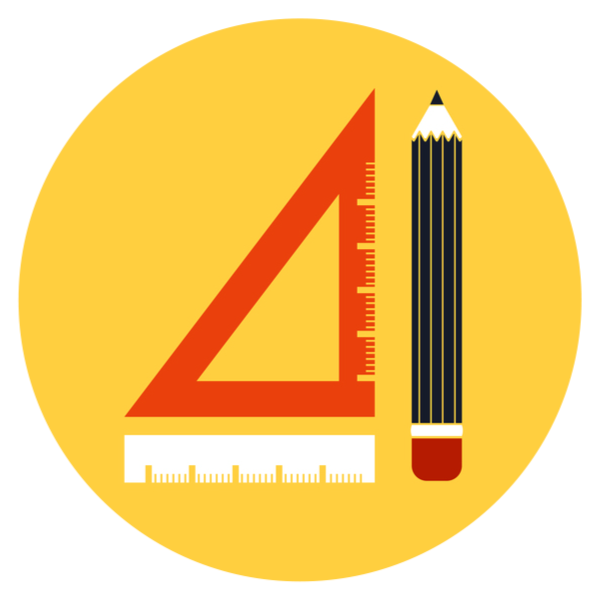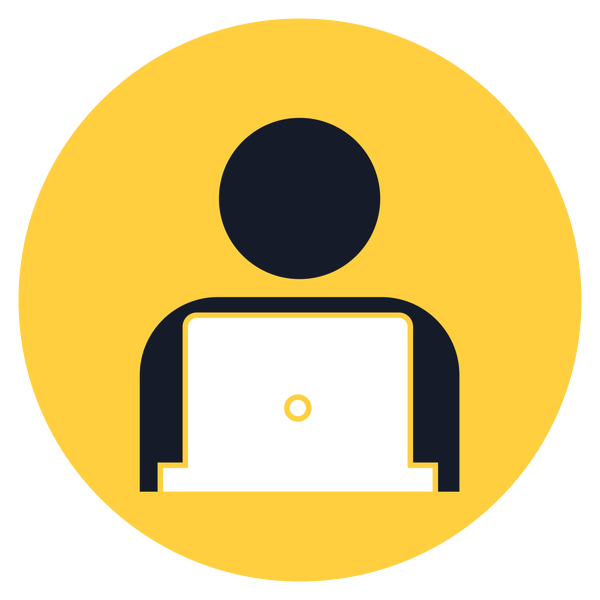

Category: Student Life
Study Tips for the Kinesthetic Learner
There are various types of learning preferences. Kinesthetic learning, also known as tactile learning, involves a preference for learning by doing or engaging in physical activities. Taking in information through sitting still in lectures is not ideal for a kinesthetic learner. However, there are ways that students with this learning style can capitalize no the trait in order to improve their intake and retention of information. If you feel this learning style applies to you, read on to learn more and for some helpful study tips for the kinesthetic learner.
Characteristics and Strengths
Kinesthetic learners are most engaged while moving. Therefore, it makes sense to try to incorporate some kind of activity when studying or learning something new. One tell-tale sign of these learners is that they often grip their pencil or pen tightly and push down hard when writing. They also may find themselves jingling keys in their pocket, twirling a ring or tapping a pen while studying. Snacking, chewing gum or smoking is common for kinesthetic learners. If these characteristics sound familiar, you’re likely a kinesthetic learner.
Kinesthetic learners have a number of strengths, and you can benefit by incorporating them into your study strategies. They tend to have great hand-eye coordination and quick reaction, so taking notes while reading may benefit you. Tactile learners have remarkable motor memory. This means they can usually pick something up quickly after only trying it once. They also excel at experiments. One characteristic that is probably most advantageous to the lifestyle of a busy college student is the high energy levels of this type of learner.
Now let’s look at some practical study tips to help meet your preferred learning style needs.
Find an Ideal Study Space
Having a regular place to study is beneficial for most students because it trains your brain to engage in the work at hand. However, for active learners it is especially important to find a type of study space that accommodates your particular need for movement or engagement. Experiment with different spaces and styles to see what works for you. For example, you may benefit from a standing desk so that you can pace a bit. Maybe you like to spread out and would feel more comfortable lying on a bed. Some tactile learners lounging in a cozy chair, while others may prefer a straight back chair so they can tap their foot. Find what feels best for you.

Take Notes
Taking notes while reading online or studying is one of the best ways to keep yourself engaged and take in the material as an active learner. Your notes should be personal to you. So if you like lots of color, use different pens or highlighters in your note taking. Draw diagrams, stick figures or symbols in your notes to help retain concepts. Kinesthetic learners tend to understand information best when they personalize it and use representative tools as visual cues.
Teach Others
That’s right. Teaching the information you just studied is a fantastic method to help you remember it. If you can find a study group of classmates to meet with over Skype, that would be great. You could each take part of the material and teach it to each other. If this won’t work for you, grab a willing friend or family member to teach. Teaching ensures that you are familiar with the material and allows you to actively engage in using it.
Find a Way to be Active
Kinesthetic learners are physical and tactile. It truly does help to incorporate some of the characteristics mentioned earlier into your study routine. If it helps you to physically be on the go, grab that textbook and walk around. Reading out loud may even be beneficial in helping the material to stick with you. Tap your pencil or your foot. Fidget, play with your keys, bounce a tennis ball or wrap a rubber band around your wrist. Chewing gum is surprisingly effective for many active learners. Any kind of repetitive movement is usually good. Do what feels right and seems to work best for you and your lifestyle.
Take Regular Breaks
Physical learners don’t like sitting still for long periods of time, so don’t force yourself to do so. Every hour, or as often as needed, get up from your study spot and do something else. Take a walk. Grab a snack. Talk to a friend. This will help you clear your head and feel renewed when returning to your studying.
As you can see, there are lots of effective ways for tactile learners to learn. Follow these study tips for the kinesthetic learner, and you’re sure to be ready for that next exam.
Get in touch with a Brighton College representative to learn more about the programs available.
Study Tips for Visual Learners

Having an idea of your learning style can help you to grasp material more easily and to remember it for longer periods of time. If you’ve determined that you are a primarily visual learner, that means that your preferred method for obtaining new information and concepts is through seeing words, figures, graphics, diagrams or other visual representations. Listening to a lecture is probably not a sufficient way for you to understand something. As an online student, it is to your advantage to be a visual learner. Reading class discussions or activities on a computer screen will be something that likely comes easily to you. There are a number of ways that you can utilize your preferred method of learning to your advantage while you’re pursuing your degree. Follow these study tips for visual learners in order to make the most of time you spend on school work and to increase your chances of academic success.
Use Images Often
The utilization of any kind of visual representation will benefit a learner such as yourself. That’s why it’s important to take advantage of things like diagrams, charts, graphs, infographics or other methods whenever possible in your study sessions. If there are not many visuals in your textbook or supplemental materials, go online to see if you can locate some. Many visual learners prefer to create their own tools. Doing so allow them to conceptualize the organization of the material in their mind and to make it personally relative in some way. Using colors or other visual markers is great, too, for things like categorization or highlighting notes. Draw symbols like stars or asterisks in your notes to create visual cues of importance.
Many online courses will incorporate videos or other digital media tools in the curriculum. Definitely take time to view these tools, as they cater specifically to yuor preferred learning style. Again, don’t be afraid to go out on your own to find supplemental ways to meet your needs. The internet is full of learning tools like video lessons, TED talks or slide presentations. A quick search will likely net you a treasure trove of materials.
Visualize Your Words
With regard to study tips for visual learners, you can take the idea of creating your own visuals one step further. In addition to developing your own tools like graphs, diagram and color coded systems, you can actually get a little creative and find ways to put words together visually in a way that makes sense for you. One example of how to do this is to add words, short paragraphs or concepts to small pieces of paper. Then you will be able to place those papers in the correct order, creating a visual trail that aids in the retention of information for a learner such as yourself who likes to see the formation of concepts or, in this case, actual words. Making flash cards may work in this way for you also. The act of writing the words on the flash cards, and maybe using different colors for various categories of information, might be helpful to your visual stimulation.

Create All Kinds of Maps
Those of you who take in information through the eyes usually love maps. Maps can be tremendously helpful for all kinds of topics, not just geography. An outline can be a kind of map because it lays out information in a spatial order. Mind maps are tools in which you organize information by writing down different aspects of an argument or concept and showing with lines or arrows the ways in which they relate.
Customize Your Notes
Taking notes is an effective method of studying for almost every type of learner. As a visual person, you can truly benefit from the note taking process by creating your own system to add visual representations to your notes. While long streams of text might be just fine for you, as you do tend to process the written word with ease, you’ll likely find it even more effective to add dimension to your notes. As was mentioned earlier, symbols or colored highlights are great ways to draw attention to information and to add an organizational component to your notes. You might want to take it a step further by using a consistent system all your own, adding a dimension of personalization and organization to your notes. Consider making a key that indicates what each symbol or color stands for. You’ll soon instinctively know when seeing a pink highlighted section of text that this is something important and likely to be on the exam. Get creative and have some fun with it!
There are lots of strategies to meet the study needs of every type of learner. Using these study tips for visual learners will make your college experience a bit easier and increase your chances of earning the kind of grades you want. Get in touch with a Brighton College representative to learn more about which programs might be best for your learning style and interests.
7 Styles of Learning – Which One Fits You?
You probably know that everyone learns new concepts in different ways. You may even have a general idea of how you prefer to take in new information. What you may not realize is that there are actually seven learning styles and that people usually have two or three preferred methods that naturally work best for them when it comes to understanding new things. Knowing your best style or styles of learning can help you tremendously in your academic life. In fact, having an understanding of this can be useful in various settings throughout your life. Utilizing your preferred learning styles in the workforce can make it easier to get through the often overwhelming orientation phase of a new job and even improve your performance. Let’s take a look at the seven styles of learning and explore ways learners from each style can get the most out of their education.
 Visual
Visual
Visual learners may also be known as spatial learners. They learn best by seeing information in a pictorial or graphic type of presentation. If you’re a visual learner, you may learn best through the use of things like mind maps, diagrams, drawings, pictures or other images. A mind map is a visual representation of thoughts and ideas, demonstrating the flow of how each is related. Utilizing color to designate categories or concepts is also a beneficial tool of the visual learner.
There are a number of study strategies that could help you in the retention and understanding of information received in class. You will likely benefit from re-reading your textbook, along with your notes, prior to exams. Read and review in short, multiple sessions though, rather than trying to cram. Review diagrams, graphs and charts to help you process data. Better yet, draw your own. The process of conceptualizing the layout of information will help it to stick in your mind.
 Physical
Physical
Another term for physical learners is kinesthetic. These folks enjoy learning by doing. They want to experience a process in order to best understand it. If the concept is not something that can be physically completed, kinesthetic learners can benefit in other ways such as the physical act of writing out notes. However, if this is your preferred method, don’t just copy your notes word for word. A more strategic way to remember information is to write it down in your own words. Making it personal makes it memorable. Drawing diagrams, utilizing physical representations of objects or concepts and role playing are also study tips that are recommended. Even walking around while reading notes could help.
 Auditory
Auditory
Auditory, or aural, learners take in information best through hearing it. It makes sense that lectures may be one of your favorite ways to learn something new. Perhaps your online instructor will record video lessons or there will be recommended videos to accompany the textbook. If not, take some time to do a YouTube or Google search. You’ll probably find lots of videos, podcasts or other type of media on your topic of choice. When you study, read your text (or notes if you’ve taken them) out loud to help you retain it. Making up songs or rhymes can be a personal and effective way to help you study, as well.
 Verbal
Verbal
If you’re a verbal learner, you probably love words. Both spoken and written words may appeal to your learning style. So you’re another student who will benefit from reading your textbook multiple times in order to take in the information. Re-writing your notes is likely helpful to you, as well. Utilizing word techniques like mnemonic devices, which are tools like rhymes, acronyms, diagrams and other types of strategies that help to improve memory.
 Logical
Logical
If you want to know the reasons behind concepts and enjoy considering the big picture of how various concepts are connected, you are probably a logical learner. Logical learners like to rely on logic and reasoning as explanations for the information they receive. Thus, you may prefer to create your own personal systems for logically connecting concepts together and remembering them. The process of creating your own system makes the information more personal to you, and the system itself will aide in your overall comprehension of the material.
 Social
Social
Social learners are often known as interpersonal learners. Working in groups is something that will excite you. You’ll gain energy from sharing ideas with and hearing the suggestions of others. If you’re a social learner, group study may be some of your most effective ways to remember information. So take advantage of connecting with a study partner or two whenever possible. Teach each other different chapters of material or give each other quizzes.
 Solitary
Solitary
On the opposite end of the spectrum from the social learner is the solitary, or intrapersonal learner. If this is your preference, you need quiet time alone in order to best process information and grasp concepts. You may feel like online group collaboration is overwhelming for you or distracting, and that’s okay. Take time to read on your, pausing when necessary to ensure comprehension. You may benefit through finding other materials for independent study. Ask for instructor for recommended resources or take some time looking online for something you find of interest.
Now that you have an understanding of each style, take some time to consider which is your strongest. You probably can relate to more than one. This is normal. Utilize the study tips offered for your particular styles, and you’ll find that learning and understanding the information will probably come easier to you. If you’re ready to get started on studying for your desired degree program, contact Brighton College today.
How to Go Back to School While Working Full-Time

The choice to go back to college as a full-time working adult can be a challenging one. Your life is probably already incredibly busy with career, family and personal obligations. You may think that attending college is an impossibility. However, there is likely a reason for considering higher education, and that reason may be strong enough to propel you to give it a try. Obtaining your degree is possible. Follow these tips for advice on going back to school while working full-time.
Build Time Into Your Schedule
Fitting education into your jam-packed life requires creativity, dedication and willpower. You will need to be more mindful of how you spend your time in order to make it work, but one of the best ways to do that is to build school time strategically into your current schedule. Look for ways to carve out time for study and class time. Some people listen to audio textbooks while commuting to work. It’s also a good idea to choose a regular study time and to let your family know that you are not to be disturbed. Another possibility may be to study outside of the home. Make efforts to use your time efficiently and create a routine so that school and study time become part of your daily routine.
Set Goals, but Be Flexible
Setting short-term and long-term goals can help you to stay focused and keep the end desire in mind. Losing track of why you are going back to school while working full-time can lead to giving up. Keeping your goals in clear view pushes you to keep going, while adding short-term goals holds you accountable and makes the process seem less overwhelming. You do have to be flexible, however. Know that a big project or unexpected life event can shake up your routine or take you off-course for a bit. Just remind yourself to get back on track when things even out. Always keep the lines of communication open with your professors. They’re usually willing to work with you during hectic times.
Have a Support System
Enlisting help from the important people in all areas of your life is crucial to your success. You may need your family to take up more of the responsibilities at home, your boss to allow you some flexibility at work and your friends to understand that you won’t be as available to do things with them. School personnel such as your academic adviser can be a tremendous support, as well. Communicating with everyone and letting them know how they can help is crucial when it comes to obtaining their support. It may take time to get everyone on the same page, and there may also be some resentment about your new pursuits. When everyone is aware of your needs, they will be more willing to help you in any way possible.
To learn more about ways to go back to school while working full-time, contact Brighton College to find out about flexible distance learning options that may work for you.
5 Tips for Military Spouse Moms Returning to the Virtual Classroom
 The sacrifices you make for your country and family are undeniable, and you’ve decided that it’s time to do something for you. Congratulations on taking a huge step toward achieving your dream career. Despite the difficulties the military lifestyle presents, Military Spouses from coast to coast are defining their idea of success every single day. Now… it’s your turn. Becoming a dedicated and focused virtual college student is not always an easy transition, especially when children (and summer vacation) are involved.
The sacrifices you make for your country and family are undeniable, and you’ve decided that it’s time to do something for you. Congratulations on taking a huge step toward achieving your dream career. Despite the difficulties the military lifestyle presents, Military Spouses from coast to coast are defining their idea of success every single day. Now… it’s your turn. Becoming a dedicated and focused virtual college student is not always an easy transition, especially when children (and summer vacation) are involved.
These 5 tips will assist you in setting yourself up for success, as a mother, student and professional.
1. Set realistic goals.
Most online programs are “learn at your own pace”, and like exercise regimens, you have to pace yourself when starting out to avoid burnout. Understanding that online schools define an expected graduation date, for a reason, is the first step. Identify your expected graduation date and determine how many lessons you need to complete vs. how many weeks you have until graduation. This will allow you to determine how much work to complete each week. Trying to juggle a family and extra coursework can result in a frustrated mommy and stressful family environment, but pacing your studies will allow you to complete your program on time and be the kind of mommy your children deserve.
2. Establish a study space that is just for you.
Focusing on school work can become difficult when your “classroom” is located amidst the chaos of everyday life. Identifying your workspace as the family room couch and coffee table, for example, prevents you from establishing boundaries between “home life” and “school life.” Before beginning classes, seek out an empty or unused room or a nook of your house to claim for your studies. Ask your family and children to respect that area as belonging to you and use that space for absolutely nothing else. Having this special place to yourself for any period of time will allow you to focus more easily and be more productive in completing your coursework.
3. Create a schedule and stick to it.
New virtual students think that the flexibility of not having to attend a physical class is the best part of going to school online. The reality is that when you avoid setting up a schedule for yourself, falling behind in your school work is a huge possibility. Our recommendation: Set aside at least one hour each day to devote to school. Use your smartphone to establish a “study calendar” and set your clock to alert your one-hour before your study time begins. This gives you time to get the kids a snack and set them up with a quiet activity before you get to work in your quiet space.
4. Talk to your kids about your goals.
Enrolling in an online diploma or degree program is exciting for you… and your family. It’s no secret that your new school schedule, workspace and frequent distractions from your typical life are going to be noticed by your children, so tell them about it. They love you and just want to be involved. Show them your school books and pictures that relate to your future career on the internet. Tell them how your family will benefit from your graduating college, and let them keep a COUNTDOWN TO GRADUATION on a dry erase board. Talk about how you will celebrate this big achievement and how important it is to you. They are listening, and in their own little ways… they do understand.
5. Adopt an exercise routine and clean eating habits.
They don’t call you “Super Mom” for no reason, but life as a virtual student makes even the strongest mom have the occasional rough day. Caffeine will only take you so far, and sometimes it’s just not enough. You’re making a big change by working towards a college diploma or degree, so why stop there? Regular exercise and healthy eating will keep you strong and healthy for your children and your studies. The best part: It’s a great opportunity to spend some quality time with the family! Take a bike ride. Go to the farmer’s market. Go swimming. Cook a homemade meal together. Play a game of soccer. Create a new future for yourself… and memories for your family at the same time
Five Career Myths

It’s not always easy to decide on the career or education you want to pursue. Whether you’re considering numerous options or are still undecided, you often have to wade through a lot of misinformation first. Because many career myths still persist, choosing a college major is stressful and confusing for some people. If you feel so anxious about the choices in front of you that you can’t move forward, it’s time to challenge some of those false beliefs.
Common College Major and Career Myths
When you feel pressure from your family, society, and even from yourself, making an informed decision about college is especially challenging. It’s important to take a step back and evaluate each statement objectively. You may be internalizing some or all of the following messages:
- I need to choose a major and know exactly what type of work I want to do for the rest of my life. This is unrealistic for anyone, but especially for people in their late teens or early twenties. You may train for a career and discover a few years later that you want to do something else. There is nothing wrong with changing careers, even several times throughout your working years.
- There is a perfect career for everyone and it’s just a matter of figuring out what it is. In reality, you may be interested in several different careers or college majors. Exploring several different options gives you the chance to clearly define your interests and strengths as well as learn a wide variety of marketable skills.
- It’s more important to choose a major and career based on employment trends rather than my personal interests. While a certain field may be growing now, markets can change quickly due to reasons that are beyond your control. If you choose to major in something you don’t enjoy, you may burn out and have to pursue education in an entirely different field anyway.
- I should choose a major that is directly related to my desired career field. In reality, today’s employers are seeking applicants who have completed college coursework in a variety of majors. Most are more concerned with the skills you developed in college rather than your declared major.
- I can figure everything out by taking a career assessment test. It’s important to keep in mind that this type of test is only a tool. It can help you learn more about your interests and skills, but it can’t tell you the exact career you should consider pursuing.
Brighton College is Here to Help
Brighton College is an Arizona-based distance learning center offering several online career training programs. Many of our students are working adults who are interested in making a career change, although we enroll people of traditional college age as well. If you are just starting to evaluate your options, we encourage you to contact us to learn more about what we have to offer. Our representatives are available by phone, email or live chat to help you begin the career exploration process.

